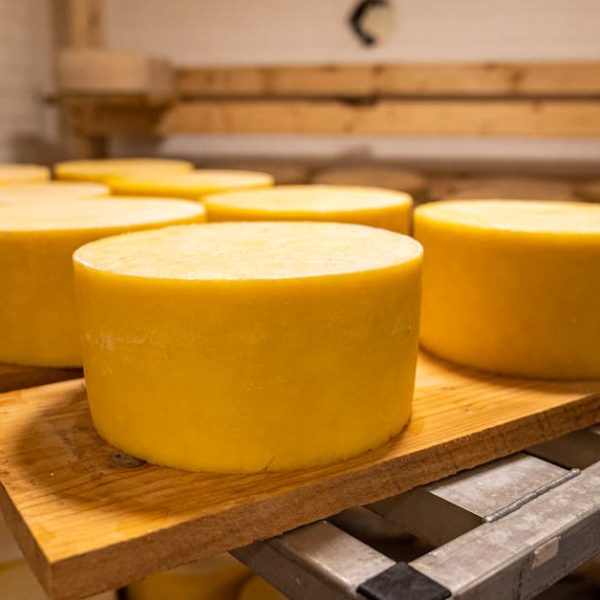Cheese, a versatile and beloved staple in many diets, can last for various lengths of time – its longevity depending greatly on the type, storage method, and handling practices. To fully understand how long cheese lasts, several factors, including moisture content, fat content, and aging process, must be taken into account. In this guide, we’ll break down these elements to help maximize your cheese’s freshness and prevent unnecessary waste.
Different Types of Cheese and Their Shelf Life
The shelf-life of cheese varies significantly based on its type. For instance, fresh, soft cheeses like mozzarella or ricotta have a high moisture content that accelerates bacterial growth, and consequently, spoilage. Opposed to this, hard cheeses like Parmesan or cheddar have less moisture, thus last longer.
However, even within these cheese categories, variations in shelf life can occur due to differences in fat content and aging process. More aged cheeses have less lactose, which implies less food for bacteria, therefore prolonging shelf life.
Here’s an illustrative comparison of different types of cheeses and their general shelf life:
| Type of Cheese | Shelf Life |
|---|---|
| Soft Cheese (Mozzarella, Brie) | 1-2 weeks |
| Semi-Soft Cheese (Blue, Roquefort) | 2-4 weeks |
| Hard Cheese (Cheddar, Swiss) | 3-6 months |
| Very Hard Cheese (Parmesan, Romano) | 1-2 years |
Pro tip: Changes in the color, texture, or smell of your cheese are signals it may have gone bad. Fresh cheese will generally have a milky smell while blue or washed-rind cheese will possess a more pungent aroma.
Maintaining Cheese Freshness: Storage Methods and Practices
Proper storage of cheese is crucial to keeping it fresh for longer. Adequate wrapping materials, correct temperature settings, and suitable containers all contribute to prolonging your cheese’s shelf life.
Here’s a simple checklist to ensure correct cheese storage:
✅ From the moment of purchase, keep cheese cold to slow bacterial growth.
✅ Wrap soft cheeses in parchment or wax paper, then loosely in plastic wrap.
✅ Store hard cheeses in a clean piece of wax or parchment paper.
✅ Avoid tightly sealed plastic containers, which can facilitate mold growth by trapping moisture.
✅ Use a cheesy leaf wrap to store cheese in your fridge.
A couple best practices to keep in mind include not freezing certain types of cheese, as it affects their texture, and storing cheese away from strong-smelling foods, since cheese can absorb odours.
How to Deal With Mold on Cheese
One thing that cheese lovers often encounter is mold on cheese. This fungus forms rapidly in conditions where there’s moisture, oxygen, and a food source, such as cheese. While certain cheeses like blue cheese or Roquefort are meant to have mold as part of their flavor, it can become a problem with other types of cheese.
The safety of eating moldy cheese varies depending on its type. With hard and semi-hard cheeses (e.g., cheddar, Swiss), you can safely cut off the moldy part and eat the rest. However, with soft cheeses (e.g., ricotta, cream cheese), when mold appears, it’s best to discard the entire cheese.
The advantages and disadvantages of this solution depend on the type of cheese and storage conditions:
| Type of Cheese | Pro of Cutting Mold | Con of Cutting Mold |
|---|---|---|
| Hard Cheese | Prolonged shelf life | You may miss invisible mold |
| Soft Cheese | Temporary solution if you plan to consume immediately | Mold may have already spread in cheese |
Pro tip: To prevent mold formation on cheese, make sure to wrap and store it properly. Regularly check your cheese to catch any mold formation early and, when in doubt about the safety of consuming moldy cheese, it’s best to discard it.
Maximizing Cheese Freshness When Serving
Keeping your cheese fresh during serving starts with bringing it to room temperature before you serve it. While this enhances the flavors, it also helps to preserve its freshness for longer. Proper cutting and storage of leftovers also go a long way in maintaining its freshness.
These are some best practices when serving cheese to ensure its freshness:
- Avoid pre-grating cheese. Keeping it in a block until needed extends its shelf life significantly.
- Avoid handling cheese with your bare hands as it can lead to bacterial transfer.
- Only take out from the fridge the amount of cheese you plan to serve.
Here’s a checklist for preserving cheese freshness when serving and dealing with leftovers:
✅ Let cheese come to room temperature for the best flavor.
✅ Use a cheese knife or cheese plane for cutting your cheese.
✅ Cover leftover cheese with wax paper and refrigerate at a temperature between 35°F and 45°F.
Understanding Cheese Expiry Dates
Reading and understanding the expiration date on cheese packaging is essential for its safe consumption. However, it’s important to remember that best by, sell by, and use by dates are often conservative, meaning your cheese could still be perfect to eat even after this date.
Pro tip: If your cheese also smells and looks good, feel free to taste a small piece even if its expiry date has just passed.
Comparing different cheese types, you’ll find that the softer the cheese, the shorter its life expectancy beyond the expiration date:
| Type of Cheese | Shelf Life Beyond Expiry Date |
|---|---|
| Soft Cheese | 1-2 days |
| Semi-Soft Cheese | 3-4 days |
| Hard Cheese | 7-10 days |
| Very Hard Cheese | 2-4 weeks |
As a final word, remember that it’s equally important to trust your senses when it comes to the freshness of cheese. If it doesn’t look, smell, or taste right, it’s best to discard it – better safe than sorry.
Key Takeaway:
- The longevity of cheese heavily depends on its type, storage methods and handling practices.
- Important factors influencing shelf life of cheese include its moisture content, fat content, and the aging process.
- Fresh, soft cheeses generally have a shorter shelf-life due to high moisture content, while hard cheeses last longer.
- Proper storage plays a vital role in maintaining cheese freshness for a longer time.
- Cheese absorbs odours thus, should be kept away from strong-smelling foods.
- Mold formation on cheese can be tackled differently based on the type of cheese.
- Cheese should be brought to room temperature before serving to preserve its freshness and enhance its flavors.
- Understand the meaning of the best by, sell by, and use by dates on cheese packaging for safe consumption.
Storing and maintaining cheese well not only prolongs its shelf life, but also aids in obtaining the best flavor and texture, thus enhancing your overall culinary experience. In fact, with a little bit of care, your cheese can last longer than you might think! Just be cautious of any signs of spoilage, and enjoy your cheese in its prime state.
FAQs
Q: Can I freeze cheese to prolong its shelf life?
A: While freezing cheese can prolong its shelf life, it can also adversely affect its texture, making it crumbly. Some types of cheese such as hard cheeses like cheddar or Swiss handle freezing better than soft cheeses like mozzarella or brie.
Q: How long can cheese sit out at room temperature?
A: Most cheeses can stay out at room temperature for about two hours. However, temperatures above 70°F can hasten the spoilage process. Always refrigerate cheese if not serving immediately.
Q: Is the cheese safe to eat if it has a little mold on it?
A: It depends on the type of cheese. For hard cheeses, you can cut away the moldy part and eat the rest, while for soft cheeses, if mold appears, it’s better to discard the entire piece.
Q: How can I prevent my cheese from absorbing the odours of other food in the fridge?
A: Storing cheese in a dedicated container or wrapping it in wax or parchment paper can prevent it from absorbing odours. Also, keep cheese away from potent foods like onions or fish.
Q: What’s the best way to handle leftover cheese?
A: Leftover cheese should be wrapped in wax or parchment paper and stored in the refrigerator at a temperature between 35°F and 45°F. It is best to consume it within a few days.
Please feel free to share this article with others who might find this information valuable and continue exploring more enlightening posts on our website.






